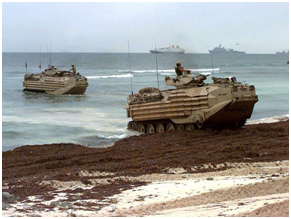Managing Technical Documentation in the Military Made Easy with the Right Software.
To many people, the phrase “Some assembly required” is the kiss of death when purchasing something. If you have bought anything from IKEA you understand how frustrating it can be to put together a dresser or a coffee table using little more than a wrench and a set of visual instructions. In most cases there is not a ton of pressure riding on the person who is assembling IKEA furniture, but what if you had to assemble, or operate, or maintain a critical piece of machinery that was responsible not only for the success of your job, but for the lives of your coworkers. This is the case for operations and maintenance mechanics in the military.
Like the IKEA assembly instructions, military technical documents (the documents used for assembly, operations and maintenance) are typically static paper drawings collected in libraries of three ring binders. And while the Department of Defense (DoD) has started to migrate to a more streamlined electronic system, the unique operating environments in which most military maintenance personnel operate require a more robust documentation management and collaboration solution.
The Challenge of Managing Complex Technical Documentation in Military Environments
Case in point - the U.S. Marine Corps - a branch of service that is known for operating in some of the worst conditions and in some of the most remote corners of the world. Jay Mitchell, a mechanic with the Corps, who spent much of his career servicing Amphibious Assault Vehicles (AAV) at Camp Pendleton. AAVs are essentially tanks that float and are used for shuttling troops from large naval vessels, through tidal water and establishing landing zones for troops to conduct beachfront operations. Needless to say, AAVs are complex, amphibious machinery that must be in perfect working order, or else a multi-ton piece of machinery ends up at the bottom of the ocean.
In speaking with Jay, he outlined how he used Marine Corps technical documentation to maintain AAVs. For most of his tenure in the Marine Corps he said that his group used three ring binders full of Technical Docs. Jay expressed some of the challenges in using the binder system to me. “The binders would get roughed up over the years of use. Grease, grime, oil, hydro, name it, it was on those pages.” This is one of the drawbacks of using static paper drawings, they only exist in one place and if something happens to it, mechanics like Jay, either have to replace them, or live with it.
The AAV maintenance group that Jay was attached to later switched to an electronic system of managing and accessing their technical docs. Jay explained the change, “We switched from the three ring binders to a Panasonic Toughbook® computer. It made life some-what easier.” Jay later explained the main problem with the Toughbook solution was power - the Toughbooks have an average battery life of around seven hours. The system also has to be loaded up like any other laptop and then Tech docs are accessed through a variety of different sources. The laptop-based technical docs solution is an improvement over the old three ring binder method, but serious drawbacks remain, that could impact mission productivity.
Publish, Access and Manipulate Technical Documentation – On the Go
To address many of these challenges, Autodesk released Inventor Publisher. Publisher is technical documentation software that works directly with engineering data to produce a wide variety of technical documents. Publisher accesses design data through the Autodesk Vault data management program, thereby ensuring that when engineering data is updated, the technical documents are updated as well. This creates continuity between the design data and the technical documentation. It also cuts down on the lag time that it takes to create tech docs after the design is finalized. With Publisher, the technical writers can produce documents throughout the design process that update and evolve as the design changes.
Along with the creation of tech docs, Publisher can produce animations, video clips, Power Point presentations, and traditional tech docs. It is also compatible with a variety of design software in use throughout the DoD.
The most exciting news for mechanic groups like Jay’s AAV maintenance group, is that Autodesk is providing free Inventor Publisher viewers for use on Apple mobile devices. All of the technical documents that are needed to operate and maintain a complex vehicle like an AAV can be contained within an iPad, iPhone or iPod Touch that can be carried in a backpack or pocket.
Keeping Our Mechanized Armed Forces Operational
These mobile platforms could give Maintenance groups the ability to access technical docs from where ever they are in the world on a quick and reliable piece of hardware that can be easily transported.
Technical documentation in the military is a vital part of keeping our mechanized armed forces running. However, there has not been a system that takes into account the specialized needs of soldiers and provided them with the flexible and reliable means to leverage technical documentation, until now. With Inventor Publisher, engineers can effectively communicate the assembly, operation and maintenance of their designs to the functional personnel that gets them up and running and keeps them up and running.
For more information about the full features and benefits Autodesk Inventor Publisher, feel free to watch the video below or visit the DLT Solutions YouTube page.

















































